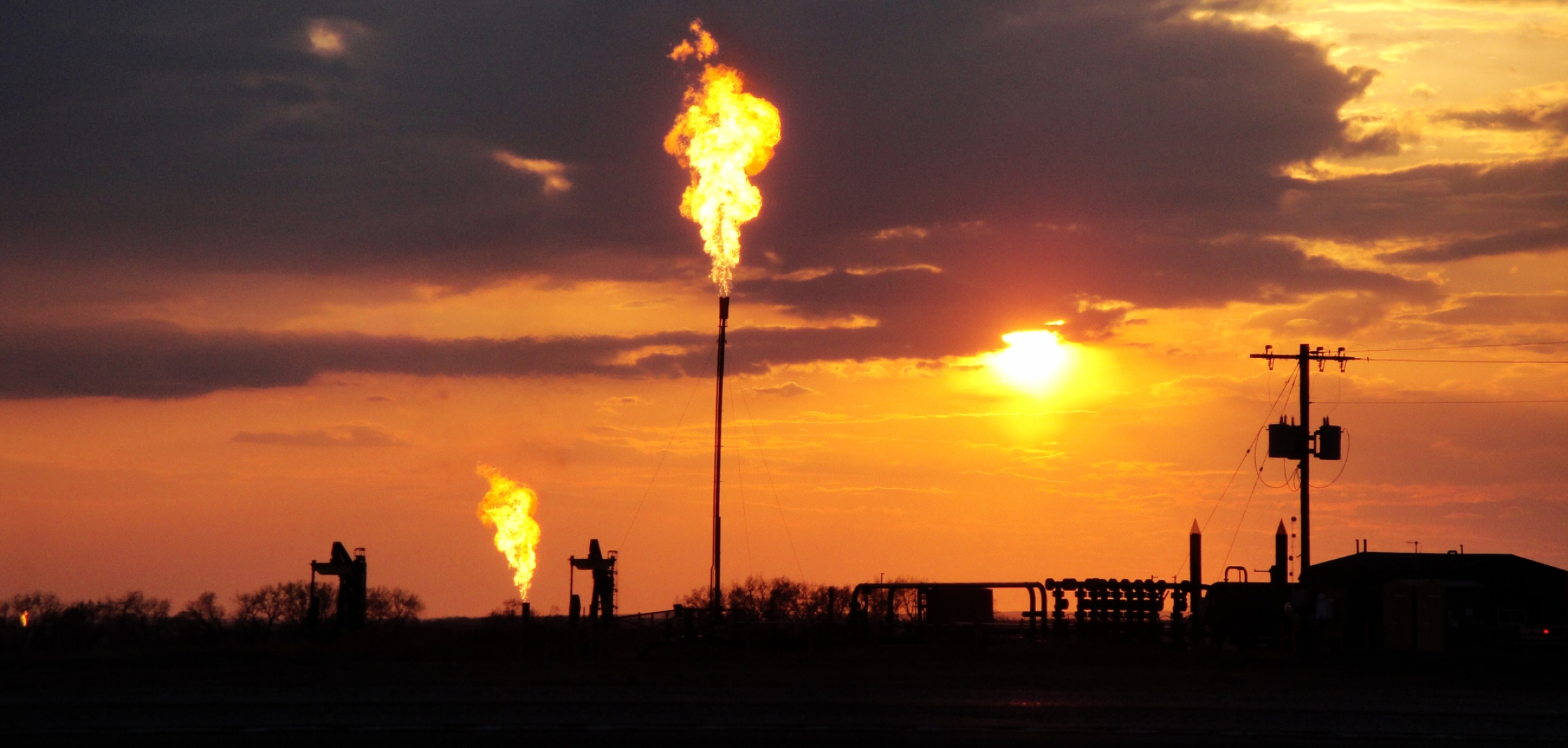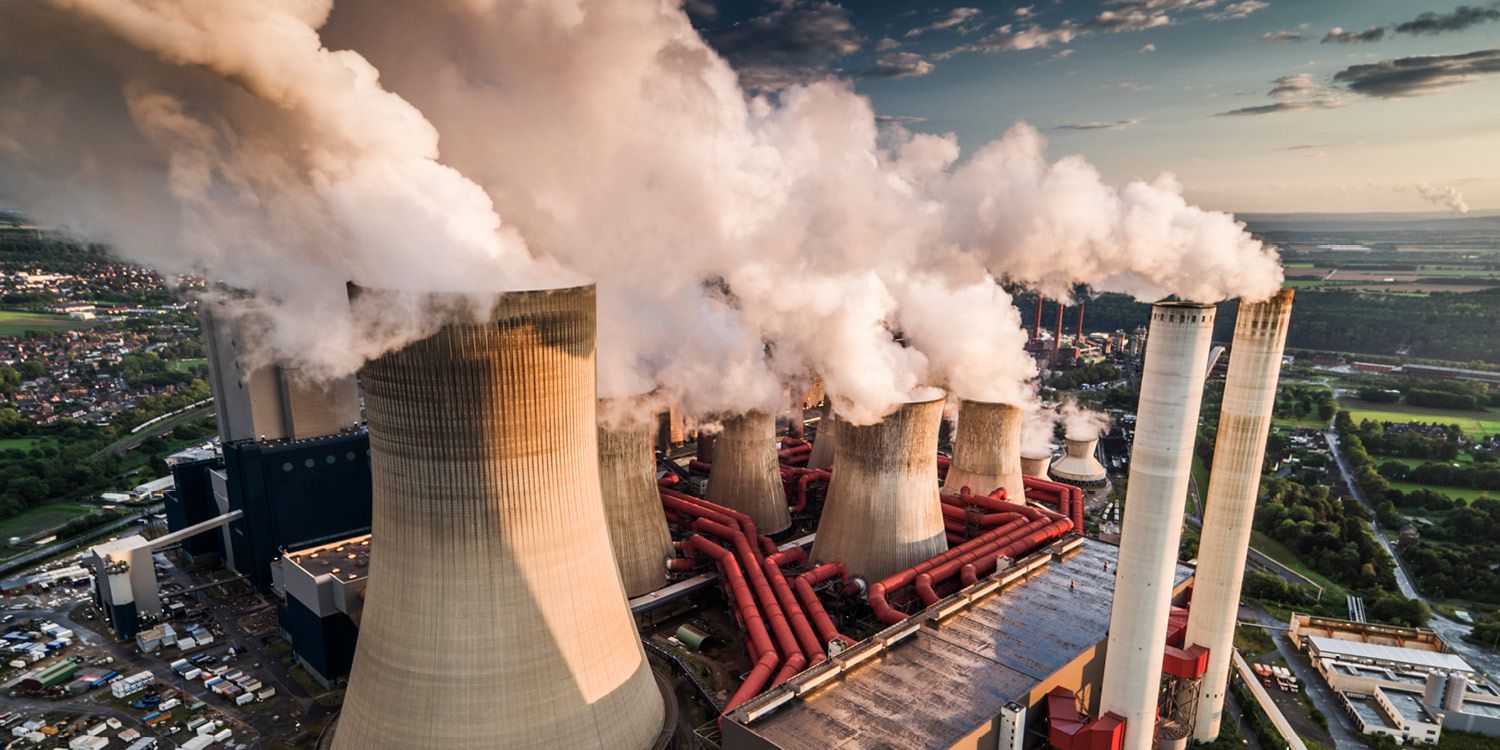Home>Gardening News and Trends>Why Does The Burning Of Fossil Fuels Increase The Greenhouse Effect On Earth Quizlet


Gardening News and Trends
Why Does The Burning Of Fossil Fuels Increase The Greenhouse Effect On Earth Quizlet
Modified: January 22, 2024
Discover the Latest News on why the burning of fossil fuels intensifies the greenhouse effect on Earth. Explore this Quizlet and enhance your understanding!
(Many of the links in this article redirect to a specific reviewed product. Your purchase of these products through affiliate links helps to generate commission for Chicagolandgardening.com, at no extra cost. Learn more)
Table of Contents
- Introduction
- What are fossil fuels?
- The greenhouse effect explained
- How does burning fossil fuels contribute to the greenhouse effect?
- Impacts of increased greenhouse effect on Earth
- Examples of greenhouse gas emissions from burning fossil fuels
- Mitigation measures to address the greenhouse effect from burning fossil fuels
- Conclusion
Introduction
Fossil fuels play a vital role in powering our modern world, providing us with energy for transportation, electricity, and heating. However, the burning of fossil fuels has been identified as a significant contributor to the greenhouse effect, which has detrimental effects on our planet. Understanding the link between burning fossil fuels and the greenhouse effect is crucial for addressing the environmental challenges we face.
Fossil fuels are derived from ancient organic matter, such as plants and animals, that has been buried and undergone geological processes over millions of years. The most common fossil fuels include coal, oil, and natural gas. These fuels contain large amounts of carbon, which, when burned, releases carbon dioxide (CO2) into the Earth’s atmosphere.
The greenhouse effect is a natural phenomenon that traps heat in the Earth’s atmosphere, making it suitable for supporting life. The Earth’s atmosphere contains gases known as greenhouse gases, including carbon dioxide, methane, and nitrous oxide. These gases allow sunlight to enter the atmosphere but prevent some of the heat from escaping back into space, creating a warming effect.
However, human activities, particularly the burning of fossil fuels, have increased the concentration of greenhouse gases in the atmosphere. The additional greenhouse gases trap more heat, leading to a rise in global temperatures. This phenomenon is commonly referred to as global warming.
The increase in global temperatures due to the enhanced greenhouse effect has far-reaching consequences for our planet. It disrupts weather patterns, causes extreme weather events, and contributes to the melting of polar ice caps and rising sea levels. These effects pose significant risks to ecosystems, human health, and the economy.
Therefore, it is crucial to understand the specific ways in which the burning of fossil fuels intensifies the greenhouse effect. By comprehending the link between fossil fuel emissions and the greenhouse effect, we can develop strategies to mitigate and adapt to the impacts of climate change.
What are fossil fuels?
Fossil fuels are non-renewable energy sources that have formed over millions of years from the remains of plants and animals. These organic materials accumulate and undergo heat and pressure in the Earth’s crust, transforming into fossil fuels. The three primary types of fossil fuels are coal, oil, and natural gas.
1. Coal: Coal is a black or brownish-black sedimentary rock that is primarily composed of carbon. It is the most abundant fossil fuel and has been used as a source of energy for centuries. Coal is formed from the remains of ancient vegetation that have been subjected to intense heat and pressure over millions of years. It is primarily burned for electricity generation and industrial processes.
2. Oil: Oil, also known as petroleum, is a thick, black liquid found in rock formations beneath the Earth’s surface. It is composed of hydrocarbons and is formed when the remains of marine organisms, such as algae and zooplankton, are buried and subjected to heat and pressure over millions of years. Oil is extracted from underground reservoirs and is refined to produce gasoline, diesel, and other petroleum-based products.
3. Natural Gas: Natural gas is a gaseous fossil fuel consisting mainly of methane (CH4) with small amounts of other hydrocarbons. It is typically found alongside oil reservoirs or in underground deposits. Natural gas is formed in a similar way to oil, with the remains of ancient marine organisms being subjected to heat and pressure over long periods. It is a versatile and cleaner-burning fossil fuel used for heating, electricity generation, and as a feedstock in the production of various chemicals.
Fossil fuels have been the dominant source of energy for industrial and domestic use for many decades due to their energy density and ease of use. However, their combustion releases carbon dioxide (CO2) and other greenhouse gases into the atmosphere, contributing to climate change and the greenhouse effect.
It is important to remember that fossil fuels are finite resources, meaning that they will eventually run out. As the global demand for energy continues to rise, it becomes imperative to explore and invest in cleaner and more sustainable alternatives to meet our future energy needs.
The greenhouse effect explained
The greenhouse effect is a natural process that plays a vital role in regulating the Earth’s temperature and making it habitable for life as we know it. It is a complex phenomenon that involves the interaction of various gases in the Earth’s atmosphere. Understanding the greenhouse effect is crucial for comprehending how human activities, such as burning fossil fuels, contribute to climate change.
The Earth’s atmosphere consists of several gases, known as greenhouse gases, including carbon dioxide (CO2), methane (CH4), nitrous oxide (N2O), and water vapor. These gases have the unique property of allowing sunlight to pass through the atmosphere and reach the Earth’s surface. The sunlight warms the Earth’s surface, and some of this heat gets radiated back into space.
However, greenhouse gases in the atmosphere absorb part of this outgoing heat radiation and re-emit it in all directions. This process traps some of the heat within the Earth’s atmosphere, creating a natural insulation effect similar to the way a greenhouse works – hence the name “greenhouse effect.”
Without the greenhouse effect, the average surface temperature of the Earth would be much colder, making it inhospitable for life as we know it. The greenhouse effect helps maintain a relatively stable and comfortable temperature range, enabling the planet to support a diverse range of ecosystems and sustain life.
While the greenhouse effect is essential for life on Earth, human activities have significantly altered its balance. The burning of fossil fuels, deforestation, and industrial processes have led to an increase in the concentration of greenhouse gases in the atmosphere, primarily carbon dioxide. The additional greenhouse gases enhance the greenhouse effect, resulting in a warming of the Earth’s surface and changes in global climate patterns.
The consequences of an intensified greenhouse effect are far-reaching. Rising global temperatures lead to melting ice caps and glaciers, causing sea levels to rise. This poses a significant threat to coastal communities and ecosystems. Changes in climate patterns also lead to more frequent and severe weather events, such as heatwaves, hurricanes, and droughts, which impact human health, agriculture, and infrastructure.
It is crucial to monitor and mitigate human-induced greenhouse gas emissions to minimize the adverse effects of the greenhouse effect on Earth. Transitioning to renewable energy sources, improving energy efficiency, and adopting sustainable practices are necessary steps to reduce our reliance on fossil fuels and mitigate climate change.
How does burning fossil fuels contribute to the greenhouse effect?
The burning of fossil fuels is a major contributor to the increase in greenhouse gases in the Earth’s atmosphere. When fossil fuels are burned, they release carbon dioxide (CO2), methane (CH4), and nitrous oxide (N2O), which are all potent greenhouse gases. These emissions greatly contribute to the greenhouse effect, leading to global warming and climate change.
1. Carbon Dioxide (CO2): Burning fossil fuels releases significant amounts of carbon dioxide into the atmosphere. CO2 is the primary greenhouse gas responsible for global warming, accounting for approximately three-quarters of all greenhouse gas emissions. The combustion of coal, oil, and natural gas in power plants, vehicles, and industries is the primary source of CO2 emissions. The increased concentration of CO2 in the atmosphere traps more heat, leading to a rise in global temperatures.
2. Methane (CH4): Another greenhouse gas emitted during the burning of fossil fuels is methane. Methane is released during the production and transport of coal, oil, and natural gas. Additionally, agricultural practices such as livestock farming and the decay of organic waste in landfills also contribute to methane emissions. Although present in smaller quantities compared to CO2, methane is a more potent greenhouse gas, capable of trapping heat more effectively.
3. Nitrous Oxide (N2O): Fossil fuel combustion and certain industrial processes also release nitrous oxide, contributing to the greenhouse effect. Nitrous oxide is mainly produced through agricultural and industrial activities, including the use of fertilizers, the burning of biomass, and the combustion of fossil fuels. Nitrous oxide has a warming potential several hundred times that of carbon dioxide, and it can persist in the atmosphere for many years.
The continuous burning of fossil fuels and the resultant increase in greenhouse gas emissions have led to the accumulation of these gases in the Earth’s atmosphere. As a result, the concentration of greenhouse gases, especially carbon dioxide, has reached unprecedented levels in the past century, causing the Earth’s climate to change rapidly.
It is worth noting that the impact of different greenhouse gases on the greenhouse effect varies, with some gases having a more significant warming potential than others. However, due to the sheer volume of carbon dioxide emissions from fossil fuel combustion, it remains the primary driver of anthropogenic climate change.
To address the contribution of burning fossil fuels to the greenhouse effect, it is essential to implement measures that reduce greenhouse gas emissions. This includes transitioning to renewable energy sources, improving energy efficiency, and promoting sustainable practices in various sectors of society, such as transportation, industry, and agriculture.
Impacts of increased greenhouse effect on Earth
The increased greenhouse effect, primarily driven by human activities such as the burning of fossil fuels, has significant and far-reaching impacts on the Earth’s climate and ecosystems. These impacts are manifested in various ways, leading to profound changes in our environment.
1. Rising temperatures: The most noticeable impact of the increased greenhouse effect is the rise in global temperatures. As greenhouse gases trap more heat in the atmosphere, the Earth’s average temperature has been steadily increasing. This rise in temperature has consequences for climate patterns, sea levels, and the planet’s overall ecosystem.
2. Changing weather patterns: The increased greenhouse effect disrupts weather patterns, leading to more frequent and severe extreme weather events. Heatwaves, droughts, floods, hurricanes, and storms become more intense and frequent, impacting agriculture, infrastructure, and human settlements.
3. Melting ice caps and rising sea levels: As global temperatures rise, ice caps, glaciers, and ice sheets melt at an accelerated rate. This, in turn, contributes to rising sea levels. Rising sea levels threaten coastal communities and low-lying islands, causing increased coastal erosion, loss of habitat, and flooding of coastal areas.
4. Impact on ecosystems: The increased greenhouse effect disrupts ecosystems and biodiversity. Many species are experiencing shifts in their habitats and migration patterns as temperatures change. Coral reefs, for example, are particularly vulnerable to rising ocean temperatures, leading to bleaching events and loss of marine biodiversity.
5. Water resource challenges: Changes in precipitation patterns and the increased frequency of droughts and floods create challenges for water resources management. Alterations in seasonal rainfall patterns impact agriculture, freshwater availability, and water supplies for human populations.
6. Health impacts: The impacts of the increased greenhouse effect on human health are extensive. Heatwaves can lead to heat-related illnesses, respiratory problems exacerbated by air pollution, and the spread of vector-borne diseases such as malaria and dengue fever. Additionally, changes in food production and availability can result in malnutrition and food security issues.
7. Economic consequences: The impacts of the increased greenhouse effect have significant economic implications. Destruction of infrastructure, loss of agricultural productivity, and the need for increased adaptation measures all contribute to economic costs.
Addressing the impacts of the increased greenhouse effect requires global action. It involves reducing greenhouse gas emissions, transitioning to clean and renewable energy sources, enhancing resilience and adaptation measures, and promoting sustainable practices in various sectors. By taking proactive steps to mitigate climate change, we can minimize the adverse effects on the Earth and safeguard the well-being of current and future generations.
Examples of greenhouse gas emissions from burning fossil fuels
The burning of fossil fuels releases greenhouse gases into the atmosphere, contributing to climate change and the greenhouse effect. Various human activities, industries, and sectors are responsible for significant emissions of greenhouse gases through the combustion of fossil fuels. Here are some examples of greenhouse gas emissions associated with burning fossil fuels:
1. Carbon dioxide (CO2) emissions from power plants: Power plants that burn fossil fuels, particularly coal-fired power plants, are one of the largest sources of carbon dioxide emissions. They release vast amounts of CO2 into the atmosphere during the combustion process. These emissions contribute to the overall increase in greenhouse gases, exacerbating the greenhouse effect.
2. Emissions from transportation: The transportation sector, including cars, trucks, airplanes, and ships, heavily relies on fossil fuels. Internal combustion engines in vehicles burn gasoline and diesel fuel, releasing carbon dioxide, as well as other pollutants like nitrogen oxides (NOx) and particulate matter. These emissions contribute significantly to greenhouse gas emissions, particularly in urban areas with high traffic volumes.
3. Emissions from industrial processes: Several industrial processes, such as cement production, steel manufacturing, and chemical production, rely on the combustion of fossil fuels. Carbon dioxide is released as a byproduct of these processes. In addition to CO2 emissions, industrial processes can also emit other greenhouse gases, including methane and nitrous oxide.
4. Emissions from residential and commercial sectors: The burning of fossil fuels for heating, cooking, and powering appliances in residential and commercial buildings also contributes to greenhouse gas emissions. Residential homes and commercial buildings that rely on oil, natural gas, or coal for heating and electricity production emit carbon dioxide and other greenhouse gases.
5. Emissions from agriculture: The agricultural sector is responsible for significant methane emissions, primarily from livestock farming and enteric fermentation in ruminant animals, such as cows and sheep. Additionally, the use of synthetic fertilizers and the decay of organic waste in agricultural practices contribute to nitrous oxide emissions.
6. Emissions from fossil fuel extraction: The process of extracting fossil fuels, such as oil and natural gas, also leads to greenhouse gas emissions. Methane, a potent greenhouse gas, can escape during drilling and the extraction process, contributing to the overall emissions from the fossil fuel industry.
These examples reflect the diverse sectors and activities where the burning of fossil fuels releases greenhouse gases into the atmosphere. It is important to recognize these sources of emissions in order to develop strategies and policies that effectively reduce greenhouse gas emissions and mitigate the negative impacts of climate change.
Mitigation measures to address the greenhouse effect from burning fossil fuels
To address the greenhouse effect resulting from the burning of fossil fuels, it is crucial to take proactive measures that reduce greenhouse gas emissions and promote sustainable energy alternatives. Here are some mitigation strategies that can help mitigate the impact of burning fossil fuels on the greenhouse effect:
1. Transition to renewable energy: One of the most effective measures is the transition from fossil fuels to renewable energy sources such as solar, wind, hydro, and geothermal power. Investing in renewable energy technologies and infrastructure can significantly reduce greenhouse gas emissions by eliminating or greatly reducing the need for fossil fuel combustion.
2. Improve energy efficiency: Enhancing energy efficiency in buildings, industries, and transportation systems is another important mitigation measure. Energy-efficient technologies, insulation, efficient appliances, and fuel-efficient vehicles can all reduce the demand for fossil fuel consumption, leading to lower greenhouse gas emissions.
3. Promote electrification: Promoting the use of electric vehicles (EVs) and electrifying various sectors, such as transportation and heating, can reduce the reliance on fossil fuels. By transitioning to electric power, which can be generated from renewable energy, we can significantly lower greenhouse gas emissions and combat the greenhouse effect.
4. Implement carbon capture and storage (CCS): Carbon capture and storage technologies capture CO2 emissions from power plants and industrial facilities and store them underground, preventing their release into the atmosphere. CCS can help reduce greenhouse gas emissions from fossil fuel-intensive industries.
5. Enhance forest conservation and reforestation: Forests act as carbon sinks, absorbing carbon dioxide from the atmosphere. Preventing deforestation and promoting reforestation efforts can help sequester carbon and mitigate the greenhouse effect. Preserving existing forests and restoring degraded lands can also enhance biodiversity and contribute to climate resilience.
6. Adopt sustainable agricultural practices: Agricultural practices contribute to greenhouse gas emissions, particularly through methane release from livestock farming and nitrous oxide emissions from fertilizer use. Implementing sustainable agricultural practices, such as precision agriculture, organic farming, and rotational grazing, can reduce emissions and promote carbon sequestration in soils.
7. Educate and raise awareness: Increasing public awareness about the impacts of burning fossil fuels and the greenhouse effect is crucial. Education and awareness campaigns can help change consumer behavior, promote energy conservation, and support the adoption of cleaner technologies and renewable energy sources.
Ultimately, addressing the greenhouse effect requires a comprehensive approach that encompasses policy measures, technological advancements, behavioral changes, and international cooperation. By implementing these mitigation measures, we can move towards a more sustainable and low-carbon future, mitigating the greenhouse effect and minimizing the impacts of climate change.
Conclusion
The burning of fossil fuels contributes significantly to the greenhouse effect, which has far-reaching implications for our planet. The release of greenhouse gases, primarily carbon dioxide, methane, and nitrous oxide, into the atmosphere intensifies the greenhouse effect, leading to global warming and climate change.
Understanding the link between burning fossil fuels and the greenhouse effect is crucial for addressing the environmental challenges we face. It is imperative to transition to renewable energy sources, improve energy efficiency, and adopt sustainable practices to mitigate greenhouse gas emissions.
The impacts of the increased greenhouse effect on Earth are evident in rising temperatures, changing weather patterns, melting ice caps, rising sea levels, disruptions to ecosystems, health risks, and economic consequences. These impacts highlight the urgent need to take action and implement mitigation measures.
By transitioning to renewable energy sources, such as solar, wind, hydro, and geothermal power, we can reduce our reliance on fossil fuels and significantly lower greenhouse gas emissions. Additionally, improving energy efficiency, promoting electrification, implementing carbon capture and storage technologies, and adopting sustainable practices in agriculture and forestry can contribute to mitigating the greenhouse effect.
Raising public awareness and educating individuals about the effects of burning fossil fuels and the importance of sustainable practices are also essential aspects of addressing the greenhouse effect. By fostering a collective responsibility and advocating for global cooperation, we can work towards a sustainable future and reduce the impacts of climate change.
In conclusion, it is vital that we make concerted efforts to reduce greenhouse gas emissions from burning fossil fuels. By implementing mitigation measures and transitioning to a clean and sustainable energy system, we can mitigate the greenhouse effect, mitigate climate change, and ensure a more resilient and sustainable future for generations to come.







